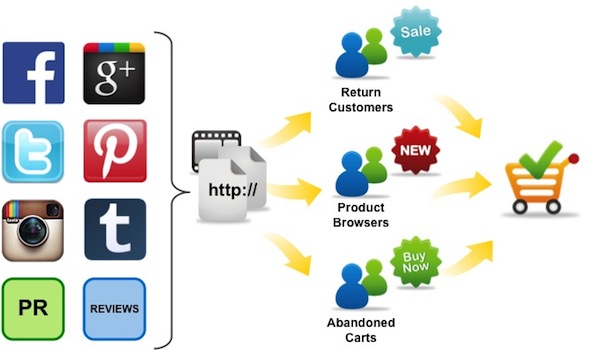Remarketing has been a buzz word in the industry since Google introduced it as a new targeting feature in March of 2010, but it has had a steep rise in interest over the last year as indicated by Google Insights for Search:


What is remarketing? It’s when you visit a website and then you’re served ads from that website as you continue to browse the web. This allows sites to reconnect with users and try to convince them to come back and convert.
Effective for the advertiser? Yes. Potentially annoying for the user? Definitely.

The data doesn’t lie – remarketing works, and generally raises conversion across all channels. As an online marketer, I love it – and I’m not alone. Advertiser adoption grew 113% each quarter after it was rolled out according to Google.
But for users, remarketing (a.k.a. retargeting) can feel creepy and invasive. One case stands out personally. I’m a loyal customer to an online retailer that I’ve been purchasing from for a decade. I was getting served ads for them so frequently and blatantly via AdRoll that it became legitimately irritating. In some cases, the ads featured items I had already purchased! It was incessant preaching to the choir that began to erode my loyalty to this particular online retailer.
Advertisers need to make sure to implement frequency capping, and ad servers need to offer more robust capping options and more intelligent creative selection. Ad blindness likely makes most users oblivious to the bulk of remarketing, but when it gets so aggressive as with my experience, it can actually garner negative attention, and run the risk of driving away loyal customers. I’ve heard this feedback from friends and users outside of the industry, and others have documented similar accounts.
Another misstep advertisers make is not segmenting their remarketing list. The fact that someone visited your site once doesn’t necessarily merit targeting them as they browse the web later. A visitor could have just as easily landed on your site unintentionally, or even worse left it immediately (bounced) after realizing it wasn’t what they were looking for. Retargeting all visitors can yield wasted impressions. It’s crucial to segment your visitors, and to remarket only to those most prone to convert.
Still, with these pitfalls the data has shown that remarketing works and works well. It’s good at capturing that new customer who is on the fence or just forgetful. Advertisers often see 2 to 6x greater conversion from remarketing campaigns than display campaigns.
Consider carefully if you have a compelling message for a remarketing campaign before jumping on the bandwagon. If you do remarket, take care to implement smart frequency capping and audience segmentation.
Suggested reading:
Google’s introduction of remarketing
Remarketing delivers better conversion
Controls to address the creepy factor
How to control the remarketing ads you see
